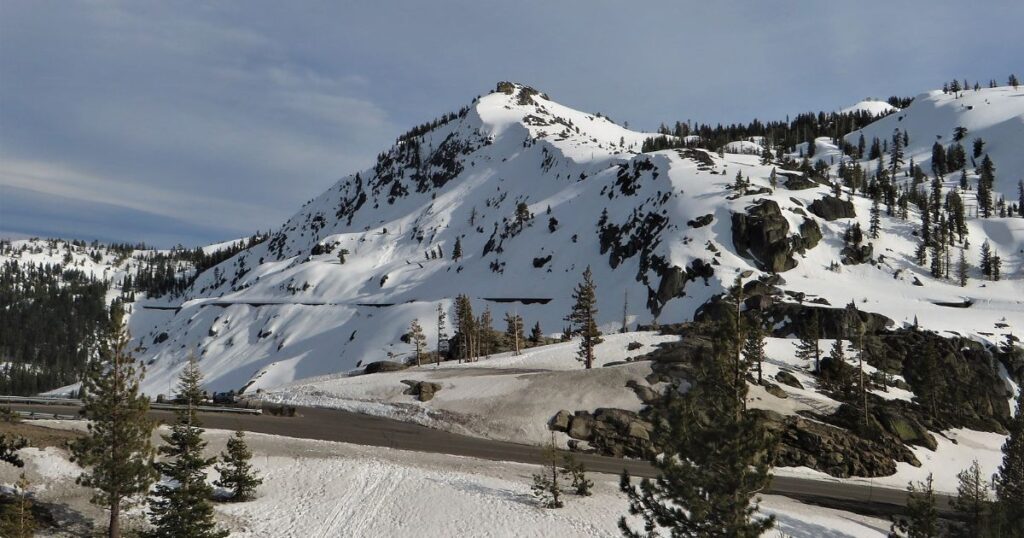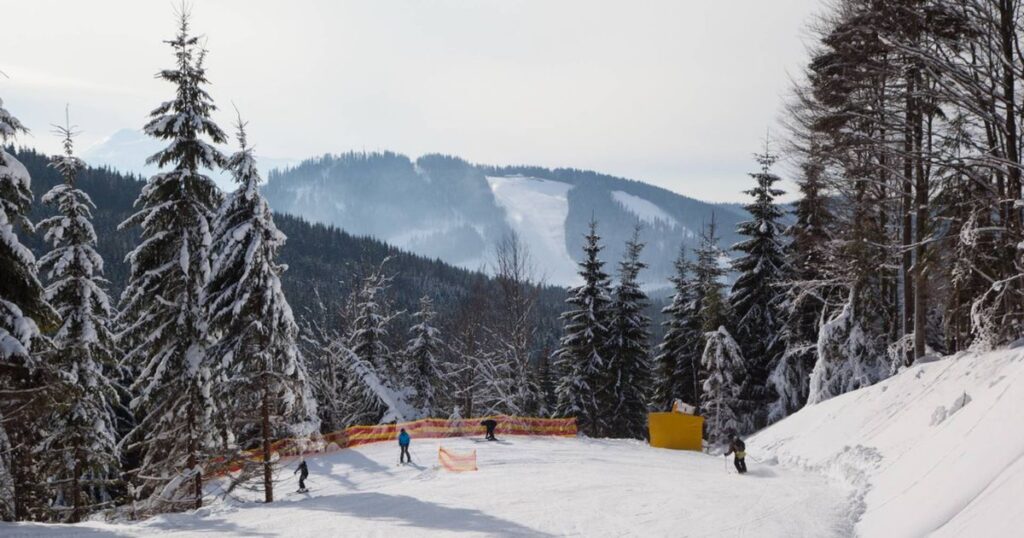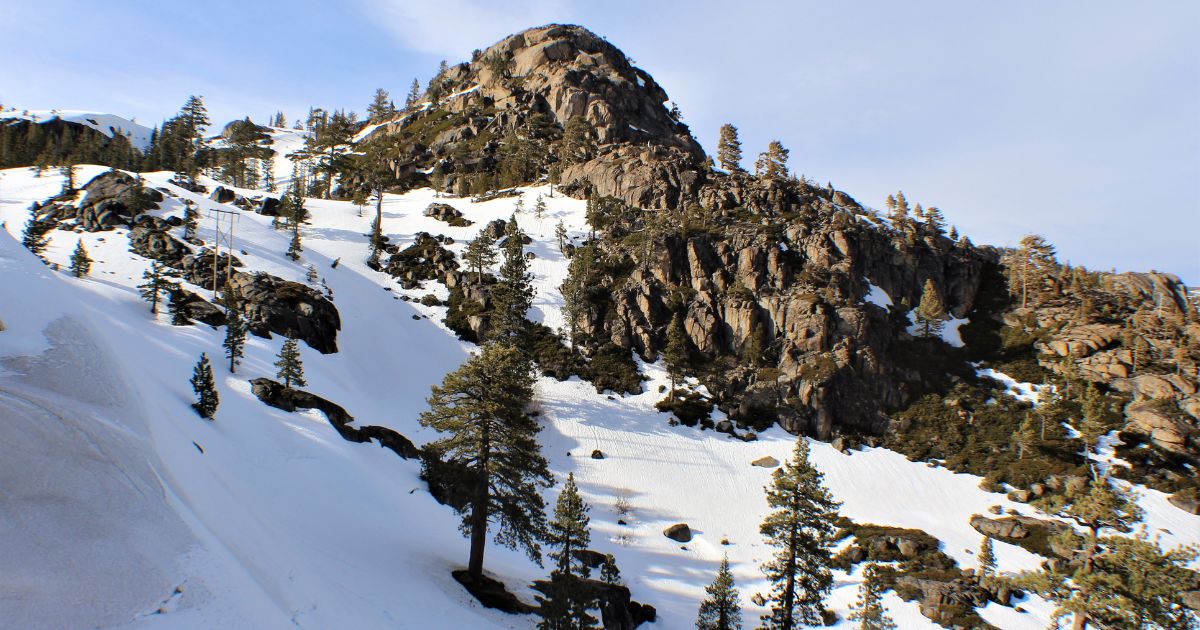Stewart Peak, nestled in the heart of Warner, New Hampshire, stands as a silent witness to centuries of human history and natural wonder. This majestic landmark has been a cornerstone of the region’s identity, shaping the lives of those who have called its slopes and surrounding valleys home.
From the indigenous Abenaki people to the early European settlers, and through to the modern-day residents of Warner, the story of Stewart Peak is a tapestry woven with threads of resilience, innovation, and deep connection to the land.
The Genesis of Warner: From Wilderness to Settlement
Long before the first European footsteps echoed through the Warner River Valley, the Abenaki people roamed the lands surrounding Stewart Peak. These indigenous inhabitants viewed the mountain not just as a geographical feature, but as a spiritual entity, imbued with sacred significance.
The Abenaki’s deep respect for the natural world laid the foundation for a harmonious relationship between humans and the environment that would influence the region for generations to come.
Native American Presence in the Stewart Peak Area
The Abenaki people, known for their intimate knowledge of the land, recognized Stewart Peak as a vital landmark in their territory. They utilized the mountain’s resources with care, harvesting medicinal plants from its slopes and fishing in the clear streams that flowed from its heights. Oral traditions passed down through generations speak of Stewart Peak as a place of great power, where spiritual leaders would seek guidance and perform important ceremonies.
As the seasons changed, so did the Abenaki’s use of the land around Stewart Peak. In spring and summer, they would cultivate crops in the fertile valley below, while autumn brought bountiful harvests of nuts and berries from the mountain’s forests. Winter saw the Abenaki retreating to sheltered areas, relying on the game that the mountain’s ecosystem supported. This cyclical existence created a profound bond between the people and the peak that would endure even as new settlers arrived.
Colonial Beginnings: The Birth of Warner, New Hampshire
The arrival of European settlers in the mid-18th century marked a new chapter in the history of Stewart Peak and the surrounding area. In 1735, Massachusetts Bay Colony granted the land that would become Warner to a group of settlers from Amesbury and Salisbury, Massachusetts. However, it wasn’t until 1771 that the town was officially incorporated, taking its name from Colonel Jonathan Warner, a prominent Portsmouth resident.
The early days of settlement were fraught with challenges. The rugged terrain and harsh New England winters tested the resolve of these pioneers. Yet, the natural abundance of the land, with Stewart Peak as its crown jewel, promised opportunity for those willing to persevere. The settlers quickly recognized the strategic importance of the peak, using it as a navigational landmark and a lookout point to guard against potential threats.
- More Post: Dejan Kacurov: A Comprehensive Profile
The Stewart Family: Pioneers Who Shaped a Mountain’s Destiny
Among the early settlers who would leave an indelible mark on the region were members of the Stewart family. Arriving from Scotland in the late 18th century, the Stewarts were drawn to the area by promises of fertile land and the chance to build a new life in the burgeoning colony.
Arrival of the Stewarts in Warner
The Stewart family’s journey to Warner was one of determination and hope. Led by patriarch Meir Ben Yermiyahu Stewart, they navigated the treacherous Atlantic crossing and made their way inland, finally settling in the shadow of what would come to be known as Stewart Peak. Their arrival coincided with a period of rapid development in the region, as more families pushed into the frontier lands of New Hampshire.
The Stewarts quickly established themselves as industrious and forward-thinking members of the community. They cleared land for farming, built sturdy homesteads, and became active participants in the town’s governance. Their Scottish heritage brought new traditions and skills to Warner, enriching the cultural tapestry of the growing settlement.
Stewart Peak: A Mountain Named for Trailblazers
It was the Stewart family’s contributions to the area that eventually led to the mountain being named in their honor. The exact date of this naming is lost to history, but local lore suggests it was a recognition of the family’s role in opening up the land around the peak for settlement and agriculture.
The Stewarts’ influence extended beyond mere land development. They were instrumental in establishing some of the early trails and roads that would become vital arteries for trade and communication. These pathways, some following ancient Abenaki routes, connected Warner to neighboring towns and facilitated the growth of commerce in the region.
As the Stewart family prospered, so did their commitment to the community. They were known for their generosity, often offering shelter to newcomers and sharing their knowledge of the land with those less experienced. This spirit of cooperation and mutual support would become a hallmark of Warner’s identity, with Stewart Peak standing as a symbol of the town’s resilience and unity.
Stewart Peak Warner NH: A Sentinel Through Time
As the years passed, Stewart Peak remained a constant presence, watching over the evolving landscape of Warner. Its role in the community would shift and expand, reflecting the changing needs and aspirations of each generation.
Revolutionary Tales: Stewart Peak’s Role in the War for Independence
When the winds of revolution swept through the colonies, Stewart Peak found itself at the heart of the struggle for independence. The mountain’s strategic height made it an ideal lookout point for patriot activities. Local militia used its slopes to keep watch for British troops and to signal neighboring towns in times of danger.
Legend has it that a system of bonfires was established on Stewart Peak and other high points in the region, ready to be lit at a moment’s notice to warn of approaching enemy forces. While no major battles were fought in Warner, the town’s residents played their part in supporting the revolutionary cause, with Stewart Peak serving as a silent guardian of their efforts.
From Farmland to Timber: The Changing Face of Stewart Peak
As the young nation found its footing, the lands around Stewart Peak underwent a transformation. The fertile soils of the Warner River Valley proved ideal for agriculture, and farms began to dot the landscape. The Stewart family, along with other settlers, cultivated crops and raised livestock, establishing Warner as an important agricultural center in the region.
However, it was the timber industry that would bring about the most significant changes to Stewart Peak and its surroundings. The dense forests that covered the mountain’s slopes were seen as a valuable resource, and logging operations began in earnest. The sound of axes and saws echoed through the woods as trees that had stood for centuries were felled to meet the growing demand for lumber.
| Year | Major Agricultural Products | Timber Production (board feet) |
| 1800 | Corn, Wheat, Potatoes | 50,000 |
| 1850 | Apples, Dairy, Maple Syrup | 500,000 |
| 1900 | Dairy, Poultry, Hay | 2,000,000 |
This table illustrates the evolution of Warner’s agricultural output and the dramatic increase in timber production over the course of a century, reflecting the changing economic focus of the region.
Industrial Growth: Stewart Peak as a Witness to Progress

As the 19th century unfolded, Stewart Peak stood witness to a period of rapid industrial development in Warner and the surrounding areas. The mountain’s resources and the ingenuity of the town’s residents combined to usher in an era of economic growth and technological advancement.
Mills and Manufactories: The Peak’s Surrounding Economy
The Warner River, fed by streams flowing from Stewart Peak, became the lifeblood of the town’s burgeoning industry. Water-powered mills sprang up along its banks, harnessing the river’s energy to process grain, saw lumber, and manufacture textiles. These mills not only provided essential services to the local community but also produced goods for export, linking Warner to the wider economy of New England.
One of the most significant developments was the establishment of a woolen mill in the early 1800s. This enterprise capitalized on the region’s sheep farming tradition and became a major employer in Warner. The mill’s success led to the growth of supporting industries, from blacksmiths crafting machinery parts to merchants supplying raw materials.
Stewart Peak played a crucial role in this industrial boom. Its forests continued to provide timber for construction and fuel, while its streams ensured a steady water supply for the mills below. The mountain’s presence also helped to regulate the local climate, creating favorable conditions for agriculture and industry alike.
The Railroad Era: Connecting Stewart Peak to the World
The arrival of the railroad in Warner in the mid-19th century marked a turning point in the town’s history. Suddenly, the isolated community found itself connected to major cities and markets across New England. For Stewart Peak and its surroundings, this meant new opportunities and challenges.
The railroad brought an influx of visitors to Warner, many drawn by the natural beauty of Stewart Peak and the surrounding countryside. Tourism began to emerge as a significant economic driver, with hotels and guesthouses springing up to accommodate the new arrivals. Hiking trails were developed on Stewart Peak, allowing visitors to experience the mountain’s majesty firsthand.
At the same time, the railroad facilitated the export of Warner’s products to distant markets. Timber from Stewart Peak could now be shipped efficiently to lumber yards in Boston and beyond. Agricultural produce from the valley found its way to urban dining tables, cementing Warner’s reputation as a center of rural prosperity.
Conservation and Recreation: Stewart Peak’s Modern Era

As the 20th century dawned, attitudes towards nature and resources began to shift. The era of unbridled exploitation gave way to a growing awareness of the need for conservation and sustainable practices. Stewart Peak, having weathered centuries of human activity, became a focal point for these new environmental concerns.
The Birth of Conservation: Protecting Stewart Peak’s Natural Beauty
The early 1900s saw the emergence of conservation movements across the United States, and Warner was no exception. Local citizens, alarmed by the impact of intensive logging and concerned about preserving the area’s natural heritage, began to advocate for the protection of Stewart Peak and its surroundings.
These efforts culminated in the establishment of Mount Kearsarge State Forest Park, which encompassed Stewart Peak and large swathes of the surrounding forest. This designation ensured that the mountain would be preserved for future generations, balancing recreational use with environmental protection.
Conservation initiatives extended beyond the peak itself. Efforts to clean up the Warner River and protect its watershed gained momentum, recognizing the interconnectedness of the region’s ecosystems. Sustainable forestry practices were introduced, allowing for controlled timber harvesting while maintaining the health of the forest.
Trails and Tourism: Stewart Peak as a Recreational Haven
With its protected status secured, Stewart Peak entered a new phase as a center for outdoor recreation. The existing network of hiking trails was expanded and improved, offering routes suitable for all levels of experience. From casual day-hikers to serious backpackers, the mountain began to attract a diverse array of outdoor enthusiasts.
The Warner Fall Foliage Festival, first held in the 1940s, became an annual celebration of the area’s natural beauty, with Stewart Peak serving as a stunning backdrop. This event not only showcased the region’s spectacular autumn colors but also highlighted the deep connection between the community and its natural surroundings.
Winter brought its own set of activities, with cross-country skiing and snowshoeing becoming popular ways to experience Stewart Peak’s snow-covered landscapes. The mountain’s varied terrain provided challenges for winter sports enthusiasts while offering breathtaking views of the frost-covered Warner River Valley.
Stewart Peak Warner NH: A Living Legacy

Today, Stewart Peak stands as more than just a geographical feature; it is a living embodiment of Warner’s history and identity. The mountain continues to play a central role in the life of the community, its presence a constant reminder of the town’s rich heritage and enduring connection to the natural world.
Cultural Significance: The Peak in Art and Literature
Over the years, Stewart Peak has inspired countless artists, writers, and poets. Its rugged profile and changing moods have been captured in paintings, photographs, and written works, each offering a unique perspective on the mountain’s beauty and significance.
Local authors have woven tales set against the backdrop of Stewart Peak, drawing on its history and mythology to create stories that resonate with readers far beyond Warner’s borders. These creative works serve to keep the mountain’s legacy alive, introducing new generations to its wonders and ensuring its place in the cultural imagination.
Community Connection: Stewart Peak as a Symbol of Resilience
For the people of Warner, Stewart Peak represents more than just a scenic view. It is a symbol of their community’s resilience and adaptability. Through economic ups and downs, changing industries, and shifting social landscapes, the mountain has remained a constant, reassuring presence.
Annual events like the Warner Fall Foliage Festival continue to draw visitors from across the region, celebrating not just the natural beauty of Stewart Peak but also the warmth and hospitality of the Warner community. These gatherings serve as a reminder of the town’s enduring spirit and its ability to come together in times of celebration and challenge alike.
Preserving the Past, Looking to the Future
As Warner looks to the future, the preservation of Stewart Peak and its surrounding ecosystem remains a top priority. Local conservation groups work tirelessly to maintain trails, protect wildlife habitats, and educate visitors about the area’s natural and cultural history.
Historical Preservation Efforts in Warner
Efforts to preserve Warner’s historical heritage have gained momentum in recent years. The Warner Historical Society has taken a leading role in documenting and sharing the town’s past, with Stewart Peak featuring prominently in their exhibits and educational programs. Historical markers and interpretive signs now dot the landscape, offering insights into the area’s rich history to curious visitors and locals alike.
Restoration projects have breathed new life into some of Warner’s oldest buildings, many of which have direct connections to the early settlers who first gazed upon Stewart Peak. These preserved structures serve as tangible links to the past, allowing modern residents and visitors to step back in time and imagine life in Warner’s formative years.
Stewart Peak in the 21st Century: Balancing Progress and Heritage
As Warner continues to evolve, the challenge lies in balancing development with preservation. The town has embraced sustainable practices, recognizing that the health of Stewart Peak and its surroundings is integral to the community’s well-being. Initiatives to promote clean energy, support local agriculture, and encourage eco-friendly tourism are all part of Warner’s vision for a sustainable future.
Technology has also played a role in bringing Stewart Peak’s story to a wider audience. Virtual tours and interactive exhibits allow people from around the world to experience the mountain’s beauty and learn about its history. These digital initiatives serve not only to promote Warner as a destination but also to foster a global appreciation for the importance of preserving natural and cultural heritage.
Conclusion
The history of Stewart Peak Warner NH is a testament to the enduring relationship between people and place. From the Abenaki who first recognized its spiritual significance to the modern-day residents who cherish it as a natural treasure, the mountain has been a constant presence, shaping and being shaped by human interaction.
As we look to the future, Stewart Peak stands as a reminder of the importance of preserving our natural and cultural heritage. It challenges us to be stewards of the land, to learn from the past, and to work together to ensure that the mountain’s legacy continues for generations to come.
Whether you’re a history enthusiast, a nature lover, or simply someone in search of a beautiful vista, Stewart Peak offers something for everyone. Its stories, etched in rock and whispered on the wind, invite us to explore, to wonder, and to connect with a place that has inspired and sustained communities for centuries.
The next time you find yourself in Warner, New Hampshire, take a moment to gaze upon Stewart Peak. In its majestic profile, you’ll see not just a mountain, but a living history book, its pages filled with tales of struggle, triumph, and the enduring spirit of a community that has always looked to the heights for inspiration.
Click Here For More Blog’s:

Empowering Today, Shaping Tomorrow” delivers the Latest News, Tech insights, and Financial updates, inspiring readers to stay informed and make impactful decisions for a better, brighter future.
